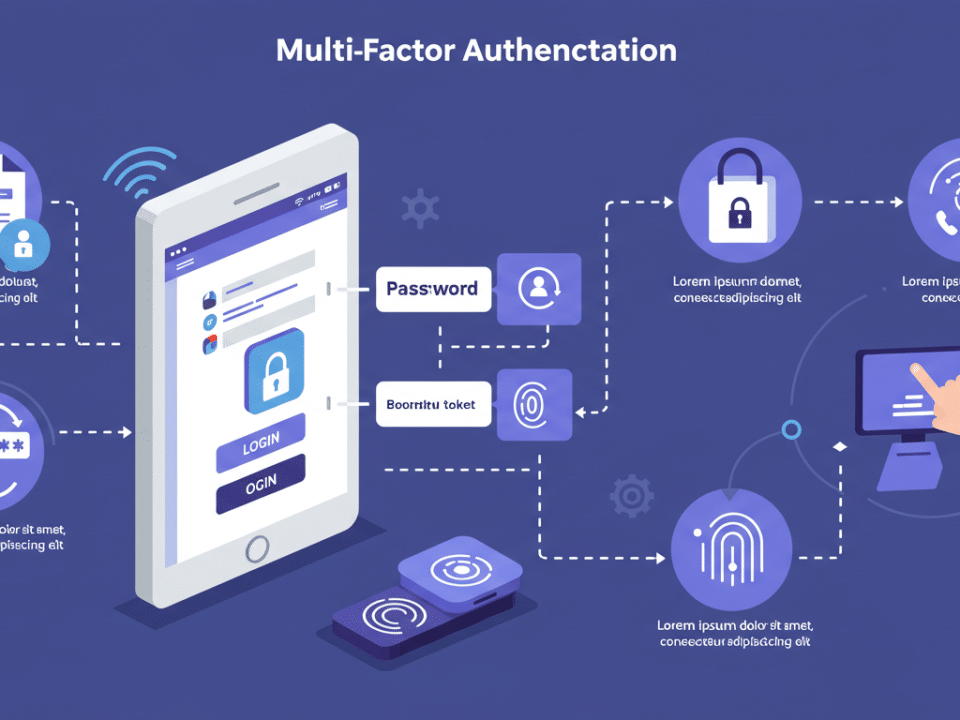
Protecting Your Digital Life: Choosing the Best Cybersecurity Software for Personal Use
December 28, 2024
Beyond Passwords: The Power of Multi-Factor Authentication (MFA)
December 29, 2024In the realm of cybersecurity, we often encounter terms like “hashing” and “encryption.” While both play crucial roles in protecting data, they serve distinct purposes and operate in fundamentally different ways. Understanding the difference between hashing and encryption is essential for anyone involved in securing sensitive information, whether you’re a seasoned IT professional or simply a concerned individual.
As your trusted cybersecurity partner, Krypto IT is here to demystify these concepts. This blog post will delve into the intricacies of hashing and encryption, explain their unique characteristics, and provide practical guidance on when and how to use each effectively.
Hashing: Ensuring Data Integrity
What is Hashing?
Hashing is a one-way cryptographic function that takes an input (or ‘message’) and produces a fixed-size string of characters, which is typically a ‘digest’ or ‘hash’. This process is irreversible, meaning that you cannot retrieve the original input from the hash value alone. Think of it like a digital fingerprint – unique to the original data but not revealing the data itself.
Key Characteristics of Hashing:
- One-Way Function: It’s computationally infeasible to reverse the hashing process.
- Fixed-Size Output: The hash value is always the same length, regardless of the input size.
- Deterministic: The same input will always produce the same hash value.
- Collision Resistance: It’s extremely difficult to find two different inputs that produce the same hash value (this is known as a collision).
Common Hashing Algorithms:
- SHA-256 (Secure Hash Algorithm 256-bit): Widely used for data integrity verification, digital signatures, and password storage.
- SHA-3 (Secure Hash Algorithm 3): The latest iteration of the SHA family, designed to provide enhanced security.
- MD5 (Message Digest 5): While still used in some legacy systems, MD5 is now considered cryptographically broken due to collision vulnerabilities and should be avoided for security-critical applications.
Use Cases for Hashing:
- Data Integrity Verification: Ensuring that a file or message has not been tampered with during transmission or storage.
- Password Storage: Storing passwords as hash values instead of plain text, so that even if a database is breached, the actual passwords remain protected.
- Digital Signatures: Creating a unique digital fingerprint of a document to verify its authenticity and origin.
- Data Deduplication: Identifying duplicate files by comparing their hash values.
Encryption: Protecting Data Confidentiality
What is Encryption?
Encryption is a two-way cryptographic process that transforms plaintext data into ciphertext (an unreadable format) using an encryption key. The ciphertext can then be decrypted back into the original plaintext using the corresponding decryption key. It is like locking information in a safe, where the key is needed to unlock and access its contents.
Key Characteristics of Encryption:
- Two-Way Function: Encryption is reversible with the correct decryption key.
- Variable Output Size: The ciphertext is usually larger than the plaintext.
- Confidentiality: Protects data from unauthorized access.
- Requires Key Management: Securely storing and managing encryption keys is crucial.
Types of Encryption:
- Symmetric Encryption: Uses the same key for both encryption and decryption. It is generally faster but requires a secure way to share the key between parties. Examples include AES (Advanced Encryption Standard) and DES (Data Encryption Standard).
- Asymmetric Encryption: Uses a pair of keys: a public key for encryption and a private key for decryption. The public key can be shared widely, while the private key must be kept secret. It is slower than symmetric encryption but provides better key management. Examples include RSA (Rivest-Shamir-Adleman) and ECC (Elliptic Curve Cryptography).
Use Cases for Encryption:
- Data at Rest: Protecting sensitive data stored on hard drives, databases, and in the cloud.
- Data in Transit: Securing data transmitted over networks, such as email, web browsing, and file transfers (e.g., using HTTPS, TLS/SSL).
- Secure Communication: Enabling confidential communication between parties, such as in secure messaging apps.
- Access Control: Restricting access to sensitive information based on user authentication and authorization.
Best Practices, Policies, and Procedures
Hashing:
Policy:
- Use strong, well-vetted hashing algorithms (e.g., SHA-256, SHA-3).
- Salt passwords before hashing to add an extra layer of security.
- Regularly review and update hashing algorithms as needed.
- Procedure:
- When storing passwords, always hash them using a strong algorithm and a unique salt for each password.
- When verifying data integrity, compare the hash of the received data with the original hash.
Encryption:
Policy:
- Encrypt sensitive data both at rest and in transit.
- Use strong encryption algorithms (e.g., AES-256 for symmetric, RSA-2048 or ECC for asymmetric).
- Implement robust key management practices.
- Regularly review and update encryption algorithms and key lengths as needed.
- Procedure:
- For data at rest, use full-disk encryption or file-level encryption.
- For data in transit, use protocols like HTTPS, TLS/SSL, and SFTP.
- Store encryption keys securely, separate from the encrypted data.
- Regularly rotate encryption keys.
Krypto IT: Your Cybersecurity Partner
Hashing and encryption are fundamental building blocks of a strong cybersecurity strategy. Understanding their differences and appropriate use cases is paramount.
Krypto IT can help you implement robust hashing and encryption solutions tailored to your specific needs. Our experts can guide you through the selection of appropriate algorithms, key management best practices, and the development of comprehensive security policies. Contact us today for a free consultation and let us help you protect your valuable data from unauthorized access and ensure its integrity.
Don’t leave your data vulnerable. Be proactive. Be secure. Partner with Krypto IT.
#Cybersecurity #Hashing #Encryption #DataSecurity #Cryptography #InfoSec #DataProtection #CyberDefense #PasswordSecurity #KeyManagement #DigitalSecurity #KryptoIT #CyberAwareness #TechSecurity #Privacy #SecurityBestPractices




